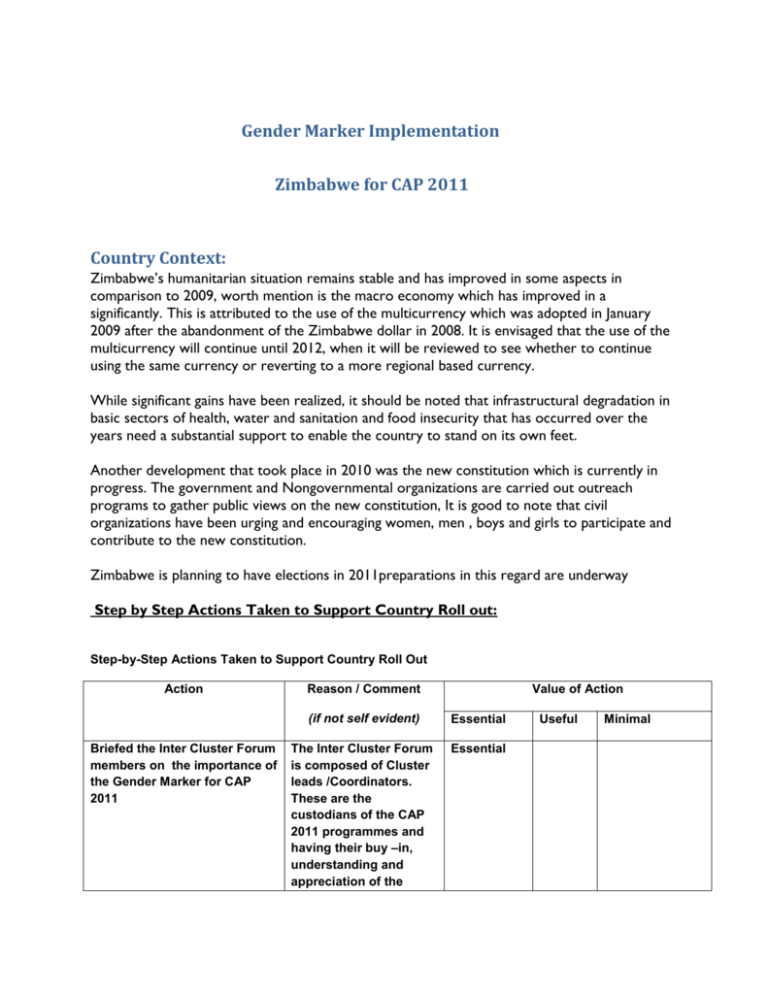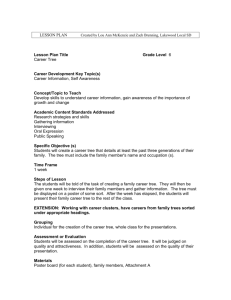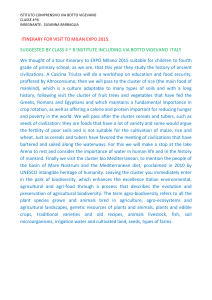
Gender Marker Implementation
Zimbabwe for CAP 2011
Country Context:
Zimbabwe’s humanitarian situation remains stable and has improved in some aspects in
comparison to 2009, worth mention is the macro economy which has improved in a
significantly. This is attributed to the use of the multicurrency which was adopted in January
2009 after the abandonment of the Zimbabwe dollar in 2008. It is envisaged that the use of the
multicurrency will continue until 2012, when it will be reviewed to see whether to continue
using the same currency or reverting to a more regional based currency.
While significant gains have been realized, it should be noted that infrastructural degradation in
basic sectors of health, water and sanitation and food insecurity that has occurred over the
years need a substantial support to enable the country to stand on its own feet.
Another development that took place in 2010 was the new constitution which is currently in
progress. The government and Nongovernmental organizations are carried out outreach
programs to gather public views on the new constitution, It is good to note that civil
organizations have been urging and encouraging women, men , boys and girls to participate and
contribute to the new constitution.
Zimbabwe is planning to have elections in 2011preparations in this regard are underway
Step by Step Actions Taken to Support Country Roll out:
Step-by-Step Actions Taken to Support Country Roll Out
Action
Briefed the Inter Cluster Forum
members on the importance of
the Gender Marker for CAP
2011
Reason / Comment
Value of Action
(if not self evident)
Essential
The Inter Cluster Forum
is composed of Cluster
leads /Coordinators.
These are the
custodians of the CAP
2011 programmes and
having their buy –in,
understanding and
appreciation of the
Essential
Useful
Minimal
Marker is vital
Shared the Gender Marker Tool
with all Cluster
Coordinators/Leads and
requested them to share with
cluster members
Self Evident
Essential
Organized a Gender
mainstreaming workshop for
Cluster coordinators/leads and
cluster members
The objective was to
enhance the team’s
understanding of
gender mainstreaming
so that they are able to
come up with gender
responsive projects for
implementation in 2011
Essential
Made presentations on the Gender
Marker Tool at the CAP 2011
Workshop held on September 1-2 ,
2010 and subsequently at cluster
meetings
Self evident
Useful
Encouraged Cluster
coordinators/leads to identify key
gender focal points in their
clusters, to work with the Gender
Adviser. This was followed with a
session aimed at building their
capacity to influence gender in
projects.
Very crucial; such an
internal structure helps
to influence articulation
of gender issues in
projects. More so this
mechanism has a long
term impact as it goes
beyond the emergence
to early recovery.
Essential
Together with OCHA reviewed the
Cluster response plans to ensure
that gender issues were in
cooperated and provided feedback
to the clusters to strengthen
gender analysis in the response
plans
Self-evident
Essential
With the new Zimbabwe CAP 2011
program–based approach, each
cluster came up with key priorities
for the cluster and based on that
cluster programmes were
developed .The Gender Adviser
with support of OCHA Gender
Focal Point reviewed the cluster
If time was on outside,
we would have loved to
engage the cluster
leads so that they
understand the coding
process. The time factor
forced the two of us to
code and shared the
Essential
programmes
coding with all clusters
afterwards.
Shared the gender marker
results and detailed
explanatory note on how this
result was reached with cluster
coordinators and gender focal
points
This was done by e-mail
and now a one to one
discussion is underway.
Essential
What would you repeat and why? (key points)
More capacity building for the cluster gender focal points
Continue presentations of gender mainstreaming sessions during and outside cluster
meetings.
Encourage the cluster coordinators to make use of gender focal points
What would you change and how? (key points)
More engagement with cluster leads/coordinators not at the time for CAP but on an
ongoing process
Find time to review the projects with cluster focal points and Cluster Coordinators.
To enable cluster coordinators to understand and value the importance of gender in
projects, we should involve them when scoring the projects. Although I did not receive
negative comments from the clusters, leaving them outside might have resulted in
resentment; fortunately this was not the case.
Constraints (that are specific to the context/country (if not captured above)
Moving from a project based to programme-based approach presented challenges as
clusters had to grasp with the new approach. Time was invested in more meetings to help
cluster coordinators come to an agreement, as a result there was less time in reviewing of
projects since we were already racing against time.
Enablers (if not captured above)
OCHA’s engagement and commitment was pivotal. Furthermore, the response by cluster
coordinators/leads to the call for Gender cluster focal points was an indication of interest
and commitment.
Gender Marker Toolkit
(Comment on use, value, changes/edits/revisions needed)
The tool is understood and appreciated by many. This was echoed during an orientation session
with cluster gender focal points. There is also a need to revisit codes 2a and 2b. I am tempted to
suggest that we add code ½ especially for projects that have attempted but not fully articulated
gender issues.
Cluster Participation:
Comment on cluster activities: (variances in reception/response to the marker; clusters requesting
most/least support; any cluster-specific insights).
Cluster
Agriculture
Commitment to
Gender
High
Acceptance of the
GM
High
Early Recovery
low
low
Education
Moderate
Food Aid
Moderate
HEALTH
High
Needs (Training)
Support etc
This is one of
cluster with more
than 40 cluster
partners, There is
a need to continue
awareness raising
on gender issues
during cluster
meetings. I have
observed that this
cluster mostly
work with
households or
families and
majority of the
members see no
need of
distinguishing,
women from men
therefore more
training is needed
This is a critical
cluster to engage
with and to have
all the members
aware of gender
issues
General
Comments
Moderate
More awareness
sessions are
needed with the
Gender cluster
Focal Points
The education
cluster delayed to
appoint the Cluster
gender focal points
the one appointed
has since left the
cluster.
Moderate
More engagement
With this cluster is
needed
High
A critical cluster
with lots of
challenges in
Need to engage
with this cluster
more regularly and
the cluster is
encouraged to
appoint gender
focal points.
Need to engage
with the gender
focal point
A very responsive
cluster
terms of disease
out breaks like
measles and
cholera. Cluster
members need
more awareness
sessions on
gender
mainstreaming
and gender marker
tool
Nutrition
Moderate
Moderate
Protection
High
High
WASH
High
High
Members have
requested for
gender
mainstreaming
workshops and
PSEA
This cluster has
not yet appointed
gender cluster
focal points.
However the GA
has had
discussions with
the Cluster
Coordinator and
equally shared
with him the
gender tool kit.
Members are
eager to learn
Need for more
training on gender
HC/HCT Leadership & Engagement
Interlocutor
Commitment to
gender
OCHA Gender
Focal Point and
Head of Office
High
Acceptance of
the Gender
Marker
High
Needs /Training,
Support (etc)
General
Comments
More training
support is needed
for the OCHA
cluster focal points
Great interest was
exhibited by
OCHA gender
focal point, this
interest and
enthusiasm needs
to be maintained
and strengthened.
Health Cluster
Coordinator and
WHO
Representative
High
High
Workshops for all
members of the
health cluster
HCT
Furthermore
OCHA has
designated focal
points for each of
the clusters, there
is a need to work
with them and
ensure that they
are all familiar with
the Gender Marker
process
Highly committed
key persons. The
Gender Adviser
will capitalize on
this. However
there is a need for
all health cluster
members to b e
conversant with
the process.
Need for more
engagement and
advocacy of the
tool.
Donor Outreach
On a general note, DFID had expressed interest in funding some aspects of Gender Based
Violence activities and not necessarily GBV activities in the CAP. However worth noting is that if
any GBV activities are funded they would cover what has been proposed in the CAP. Meetings
with other donors are in progress.
3.
Results – The Gender Analysis of the 2011 CAP Document & Cluster Programmes
Where a gender analysis was done of the 2011 CAP, please insert comparative comments.
CAP – CHAP Section
Yes
x*
Strategic Priorities include gender equality
Selection Criteria include gender equality
x
CHAP narrative features gender analysis/issues
x
Gender is integrated as a cross-cutting issue.
No
Gender Dimensions in Cluster Response Plans
Cluster
Gender in
Gender in
Response
Strategy
Gender in
Monitoring
Needs Analysis
Gender in
Objectives-ResultsIndicators
Agriculture
Partially
Partially
Partially
Yes
CCCM
No
No
No
No
Early Recovery
yes
yes
yes
no
Education
Partially
Partially
yes
No
Food Security
Yes
Yes
Yes
Health
Yes
Yes
Yes
Yes
Nutrition
Yes
Yes
Yes
Yes
Protection
Yes
Yes
Yes
Yes
Shelter
-
-
-
-
WASH
Yes
Yes
Yes
No
(Coordination)
Comments …
Gender Code Results
Cluster
Total #
programmes
Code 0
Code 1
Code 2a
Code 2b
Agriculture
4
1
3
-
-
(CCCM)
2
2
Early Recovery
3
-
2
Education
4
1
2
1
-
Food Security
1
-
1
-
-
Health
3
-
2
-
-
Nutrition
4
1
0
2
1
Coordination
1
Protection
4
-
2
-
2
Shelter
-
-
-
-
-
WASH
4
1
2
1
-
4. Use of the Marker to Track GBV Results
Gender based violence is a major problem in Zimbabwe and cases are glossily under reported due to
cultural , social and economic reasons. According to the Global Peace Index, 80 percent of all people
murdered in Zimbabwe in 2009 were women. Domestic Violence is on the increase in Zimbabwe due to
high unemployment rate and unfulfilled expectations among men, frustrations and feelings of
powerlessness. Prevalence of domestic violence ranges from 18 to 55 % in some provinces. Sexual
violence against young women is particularly high with 62% of the victims being girls between the ages of
15-19 years old. Among others is the trafficking of women, girls, boys and men fleeing from poverty.
Forced /marriage is another form of violence that exist in Zimbabwe.
Type of
GBV
Project #
Cluster
& gender
code
Focus:
Needs
Activities
Outcomes
Protection,
response or
other
Target
M-W-GB
GBV
Zim-11/PHR.RL
39547
Protection
GBV
prevention &
response
mechanism
X
X
X
M-W-G-B
GBV
Zim-11/PHR.RL
39539
Protection
Child
protection
response
mechanism
including key
focus on
sexual abuse
X
X
X
B-G
Violence
and
bullying
Zim11/E/39341
Education
Prevention
and response
X
X
X
G-B
Trafficking
Zimb-11/pHR.RL
39538
Protection
Prevention &
response
X
X
X
Sexual
Violence
Zim11/H/37652
Health
Forced /Early
marriage
X
X
X
Prime
focus:
women
& girls
Next Steps – How will the Gender Marker be Followed-up on throughout CAP 2011 implementation
1. A step by Step post-review of the cluster programmes and response plans with gender cluster focal points and Cluster coordinators to assess gaps, weaknesses, and strengths
2. Monitoring of the implementation of the planned activities to assess the impact of the
programmes. In addition the Gender Adviser together with gender cluster focal points
would like to review the monitoring tools and ensure that they are in line with the gender
checklists provided in the IASC Gender Handbook.
3. Strengthen the Gender cluster focal points through organized sessions and coaching
4. Organize gender mainstreaming sessions using the CD’s received from Inter Action (Elearning Course –Increasing Effectiveness of Humanitarian Action for Women, Girls, Boys
and Men). The sessions will be organized for Cluster coordinators/leads and cluster
members.






